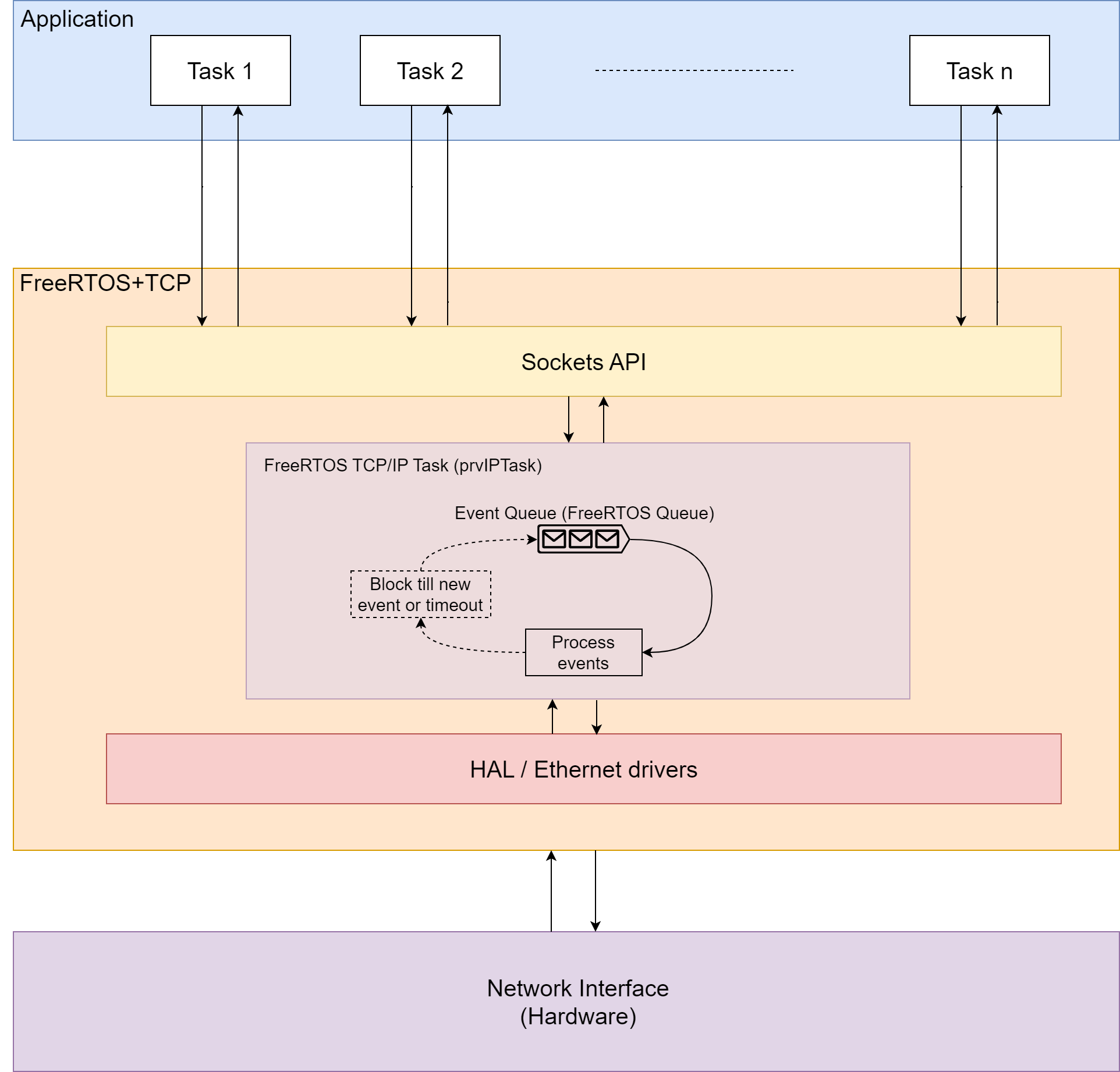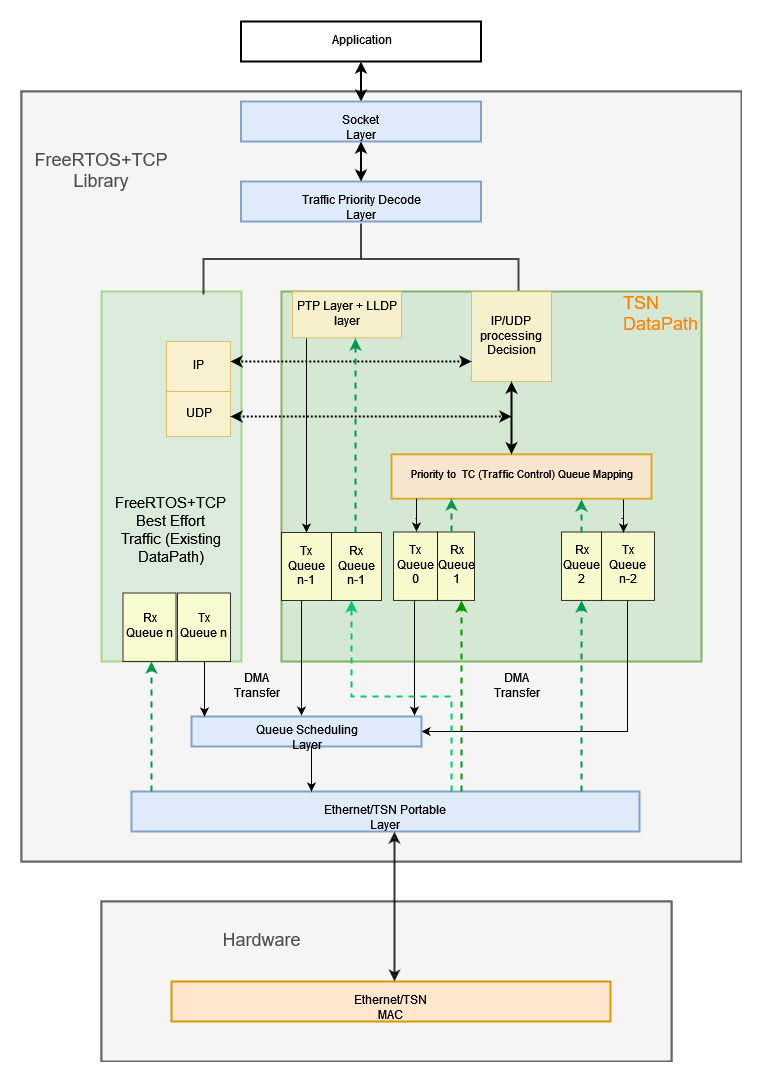At Smart Production Solutions (SPS) fair in Nuremberg in November 2022 a group of 8 partners - Analog Devices, Arm, Amazon Web Services (AWS), B&R Industrial Automation, Lattice Semiconductor, Schneider Electric, Texas Instruments and NXP - announced a working group to create a permissive and open source Open Platform Communications United Architecture (OPC UA) over Time Sensitive Networking (TSN) software package with FreeRTOS. Today, we make public the development project that aims to enable applications to have consistent access to TSN capabilities offered in hardware. This project focuses first on supporting customers using OPC UA at the industrial field level and follows the OPC UA Field eXchange (UAFX) specifications.
For context, OPC UA is a machine-to-machine communication protocol used for industrial automation and developed by the OPC Foundation. TSN is a standard technology to provide deterministic communication on Ethernet, and is managed by the Time-Sensitive Networking task group for IEEE 802.1. Although Ethernet is the most wide-spread networking technology employed, it inherently operates on a best effort basis to deliver packets across a network. TSN is a set of OSI layer 2 standards that make Ethernet deterministic. Ethernet headers are used for routing decisions, therefore the Ethernet payload can be anything, not just IP packets. This means that TSN can be used in any environment and can carry the payload of any industrial application.
It is estimated that more than 200 million industrial field devices will run OPC-UA/TSN by 2030, growing from 3 million in 2025. These devices are part of smart sensors, actuators, and IOs and communicate to similar devices, controllers, programmable logic controllers (PLCs) and SCADA systems. OPC-UA/TSN also enables raw data to be sent directly or via edge appliances to the cloud for further processing, insights, or higher level AI based services such as predictive maintenance.
Currently, the sensor data collection mechanisms and formats in industrial systems are fragmented. The industrial data communication protocols such as Profibus, Modbus, EtherCat, etc. lack a common data format and interoperability. The bespoke formats are not human-readable and need custom coding/decoding to extract intelligence from machines and manufacturing facilities. The lack of interoperability locks customers into vendor-specific solutions, with limited ability for their machines to communicate or synchronize with other systems. In a multi-vendor plant, the lack of interoperability and common format makes it challenging for the developer to implement high-level applications such as condition monitoring, line balancing, and predictive maintenance. Secondly, developers have limited access to unfiltered (raw) data from sensors and actuators. This unfiltered data is needed to create resilient machines and IIoT applications with high levels of accuracy.
Traditionally, these sensors and actuators are connected to microprocessor-based PLCs and controllers that filter out the raw data and use the vendor-specific field-bus formats (e.g. Profinet, EtherCat, CCLink). According to B&R, "PLCs share a fraction of the data available because source raw data is manipulated, omitted or only alarms are retained." Field device data helps manufacturers provide basic services such as analytics to their customers. However, since the unfiltered semantic sensor data is not easily accessible and never reaches the cloud, customers find it challenging to create higher level services like predictive maintenance, condition monitoring, and asset performance monitoring, or to use it for digital twin representation and continuous insights.
Finally, to mitigate interoperability issues, customers and industrial vendors are moving to a common communication framework such as OPC UA over TSN. OPC UA provides a standardized way to structure data, so it provides semantics for any kind of asset. And TSN defines the common connectivity layer that provides deterministic real-time communication across control and field devices. OPC-UA over TSN is designed as a real-time Ethernet communication standard that provides open, deterministic, real-time communication between automation systems.
In order for OPC UA to be adopted at field level at the same scale as existing industrial protocols, the price of devices supporting OPC-UA/TSN needs to be on par with existing solutions. This requires the availability of low-cost MCU and low-power FPGA SoC based devices that support OPC-UA/TSN. To that end, silicon vendors such as TI, NXP, ADI, Lattice Semiconductor, Renesas, Hilscher, etc have started manufacturing silicon chips embedding TSN capabilities to reduce the BOM cost by at least 50% for industrial field devices. What is missing, however, is the software to make the development for field devices that incorporate TSN cost competitive. Lack of an RTOS that abstracts the various silicon providers' hardware implementation of TSN blocks medium and small industrial device manufacturers from focusing on bringing smart sensors and actuators with OPC UA/TSN to market.
Project design objectives
Our goals for this phase of the project are to:
- Define the standard APIs in FreeRTOS-plus-TCP library to support TSN and best effort traffic.
- Design a multi-priority queue software architecture in the FreeRTOS-plus-TCP library to support TSN.
- Define a clear boundary between the FreeRTOS-plus-TCP stack and the TSN portable layer, which will be vendor specific and will be contributed by our Chip Vendor Partners.
FreeRTOS-plus-TCP Software Architecture
Existing Architecture
Repo: https://github.com/FreeRTOS/FreeRTOS-Plus-TCP
Latest Version: V4.0.0
In the existing design of the FreeRTOS+TCP stack, the IP task is designed as an event driven task. It blocks (pends) with a timeout on a FreeRTOS queue, to which the application(s) and the network interface post events. When an event is received (event posted in the queue), the IP-task unblocks and processes those events. These events include:
- Transmit/Receive events from and to socket APIs
- IP stack timer events
- Other network events (such as network up/down events)
All events received in the queue are currently processed with the same priority (as there is only one SW queue), regardless of the traffic type, socket configuration, protocol, etc.
Limitations in Current Architecture to support TSN
- There is no option in the existing stack to handle multi-priority traffic data.
- Three context switches (Application task to IP task and IP task to Network Driver task) may make the transmit and receive latency non-deterministic for TSN operation.
- The FreeRTOS-plus-TCP idle task
PrvIPTaskcurrently has higher priority than the application tasks. This will pose a problem as the TSN higher throughput may require application tasks to be of higher priority than the idle task. - Using the same Ethernet Driver task for both Transmit and Receive will pose a challenge for high speed TSN throughput.
Moving forward
We are working on advancing the FreeRTOS+TCP stack based on the following design principles:
- API:
- Common APIs for both Best effort and TSN traffic.
- A new "xDomain" called "FREERTOS_AF_TSN to be introduced for "FreeRTOS_socket" API for TSN traffic type.
- Traffic Separation layer:
- A decode layer after the socket layer differentiates between Best Effort TCP traffic and TSN traffic.
- The same layer also differentiates among various priority TSN traffic.
- Traffic priority and Multi Priority Queues:
- Multi priority support to have deterministic traffic in layer 2.
- Support for traffic processing based on its priority.
- The stack can work in 2 modes:
- Only Best effort Traffic : Here the stack will work as a single queue system.
- Best Effort and TSN traffic : Here the required number of queues will be active based on the number supported by the underlying hardware.
- Traffic Scheduling:
- Transmit:
- The FreeRTOS-plus-TCP Stack will use a simple round-robin mechanism to flush the queues to Hardware.
- The Hardware will be deciding the transmit and receive rates and FreeRTOS-plus-TCP stack will maintain the hardware rate.
- Every queue will have a threshold value and whenever this value is reached the DMA will transfer the data to the TSN MAC.
- Transmit:
- Receive:
- The TSN hardware will take care of prioritizing the packets based on the traffic priority.
Block Diagram for transmit + receive
Feedback from our partners
We are excited that this project can reduce the complexity of providing synchronized, scheduled, and prioritized traffic with Ethernet TSN implemented on hardware by a diverse set of silicon. This makes the software interoperable and easy to re-use, and lets device makers focus on their customer applications. Our partners are equally excited.
"We are happy to see the upcoming solutions for OPC UA FX and TSN on FreeRTOS as it will help develop our products even more robust, real-time capable and at the same time IoT-enabled based on an industry-proven stack. Sharing R&D resources through this open source approach also lowers our initial investment and reduces time-to-market." - Stefan Schoenegger, Global Product Group Manager, Controls at B&R Industrial Automation.
"At Schneider Electric, we aim for an open, unified, standards-based communication ecosystem that will bring consistency and interoperability across Industrial Automation. We are happy to support our partners in making this new solution based on FreeRTOS following the OPC UA FX and TSN standards. This will help develop the ecosystem and bring OPC UA FX and TSN down to the field level and to the small and medium end devices." – Florian FOUILLET, Industrial Communication Program director.
In addition, Arm added features to X.509 certificate handling in MBed TLS in support for 802.1AR specification. This effort was released as part of the MBedTLS 3.5.0. The code repository can be found here.
Getting started and code contributions
You can get started and find more information in the FreeRTOS-plus-TCP GitHub repo's tsn branch. There will be separate repositories for partners for their TSN-enabled chipset drivers.
We're looking forward to your continued feedback and contributions. One area for contributions is regarding applications for configuring TSN devices. Netconf has been identified as the companion application that can fulfill this need. Today Netconf could be utilized on Linux based devices but not on compute and memory constrained devices such as microcontrollers and low-power FPGA based SoCs.
Visit the FreeRTOS forums if you have comments or requests!




